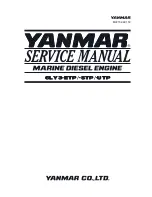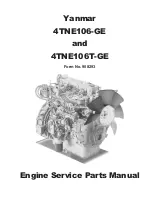
INSTRUCTIONS AND MAINTENANCE MANUAL
MAC R MOTORS
PAGE:
17
CODE: CTT12 EDITION: 01 DATE: MAY 2013
Subject to technical changes without prior notice
3.3.6
Insulation class
The insulation rating of an electrical machine is identified on the motor specifications plate by means of a letter in
accordance with the IEC/EN 60034-18 standard.
The following table summarises the maximum allowed temperature in the installation of a winding in accordance
with its insulation rating:
Class
Maximum temperature
A
105ºC
E
120ºC
B
130ºC
F
155ºC
H
180ºC
Table 9: Insulation classes
3.3.7
Heating limits
The IEC60034-1 standard defines the maximum admissible heating (increase in temperature) for the windings as
specified in the following table:
Thermal Class
Coolant
temperature
Heating
(per element)
Operating
temperature
B (130ºC)
< 40ºC
< 80ºC
< 120ºC
F (155ºC)
< 40ºC
< 105ºC
< 145ºC
H (180ºC)
< 40ºC
< 125ºC
< 165ºC
Table 10: Heating limits
Accordingly, the rated working conditions of the motor must be such that the operating temperature on the
windings is always below the temperature specified by the insulation class of the part materials. Therefore, the
working thermal class of a motor can correspond to the following:
a)
The same thermal insulation class
. This would be the case of a motor built with
Class F
insulation
(155°C) with a maximum working temperature of 140°C, corresponding to a
Class F
.
b)
A thermal class lower than the insulation class
. This would be the case of a motor built with
Class H
insulation (180°C) with a maximum working temperature of 140°C, corresponding to a
Class F
.
















































